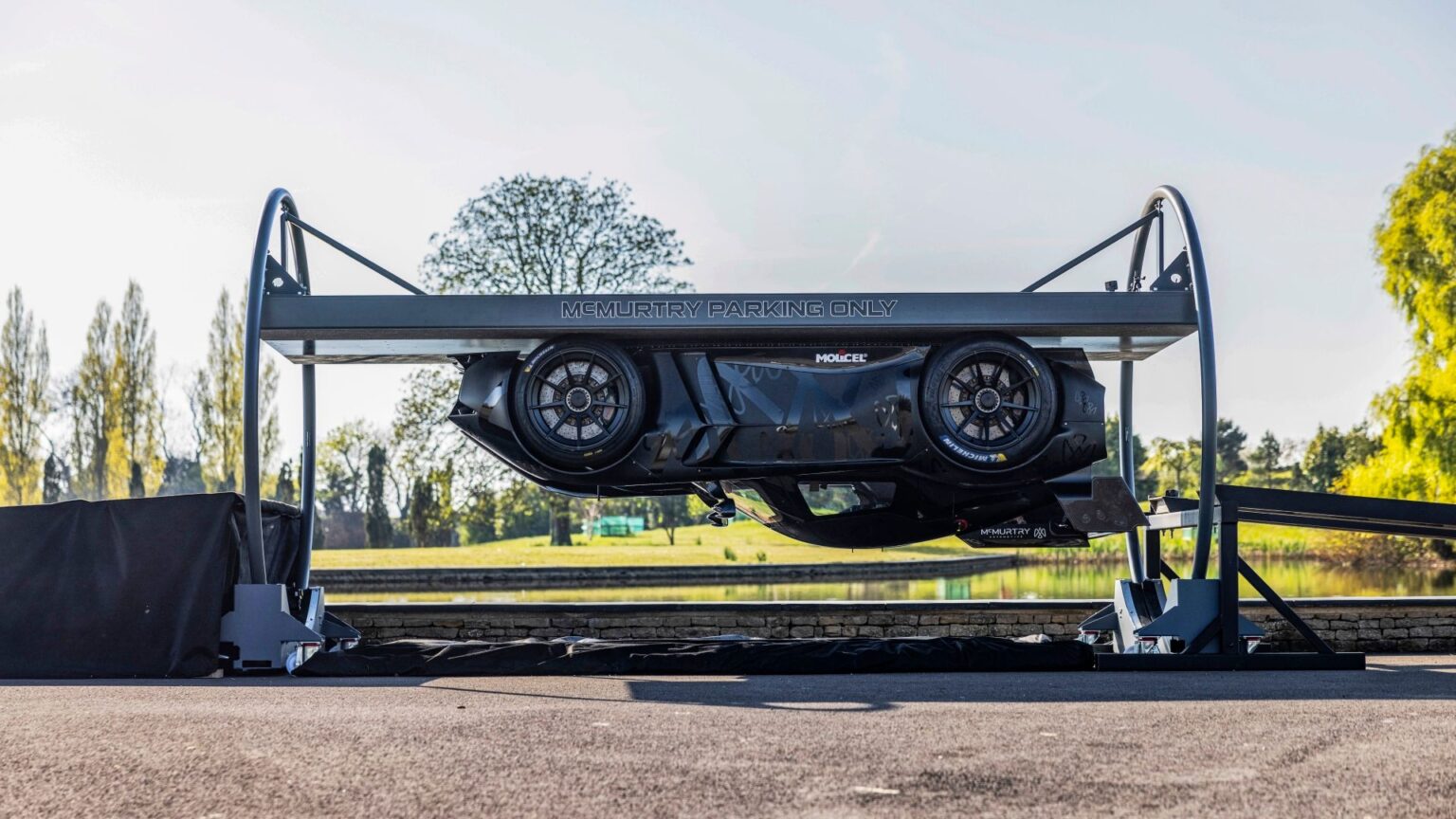We’ll acknowledge that the McMurtry Spéirling isn’t even a niche car. If you’ve even heard of a Rimac Nevera you’re an oddball — a fan of hyper-expensive electric hypercars that (just guessing) you’ll never own, and probably won’t even see in the flesh. But with 4,400 pounds of downforce at a standstill, McMurtry, the tiniest of all hypercar brands, wanted to prove exactly what that means by shooting a video of their car not driving at all, and yet having enough suction to stick like a magnet to the underside of a platform. Thomas Yates, Co-founder and Managing Director of McMurtry Automotive, piloted the test, which had to be at least a little bit scary, since, of course, if the fan system creating the downforce had failed, the car would’ve smashed directly onto him. Sure, the Spéirling is remarkably lightweight, at just 2,205 pounds — roughly 150 pounds lighter than a Mazda Miata — but you still don’t want to be upside down in any car.
How Does This Work?
McMurtry’s Downforce-on-Demand system uses dual fans that act as vacuums to literally pin the car to any surface. What’s incredible about this notion is that downforce, rather than braking, acts to control the car, and if you think about the limits of performance, it’s always about tire grip. How much adhesion do the tires have, and how can that grip translate to pace around a corner or in a straight line? In the case of the McMurtry, downforce creates that control, and that translates to far less need for braking and, in turn, the ability to steer and also get back on the power much quicker out of a turn.
If none of that makes sense, just watch the below video of the McMurtry Spéirling ripping around Laguna Seca at a surreal pace.
What’s the Limit?
If you’re building a hypercar that costs millions of dollars, like the insanely powerful, 1,914 horsepower Rimac Nevera, you rely on downforce generated by speed. But that car, like the Aston Martin Valkyrie (which generates a pretty astonishing, 1,100 kg/2,425 pounds of downforce) can only do so while in motion. And there are extremes to how much downforce is a good thing. The Toyota TS010 Le Mans car could produce from 5,249 pounds (2,381 kg) to 7,298 pounds (3,310 kg) of downforce at 190 miles per hour. But the car would literally break the bones of drivers, and obviously it would produce far less downforce at slower speeds, which is the same for the Nevera, Valkyrie, and other cars being sold to very-well-heeled patrons.
The McMurtry Spéirling’s 4,400 pounds would very clearly also break bones (or could) at the 3G cornering force the car is claimed to be able to achieve, but because it can create incredible downforce, oh, 40 miles per hour, or, as now proven, 0 miles per hour (!), the combined hardship on the driver should be considerably less taxing.
TopSpeed’s Take
McMurtry says it’ll begin deliveries next year, and has been a little mum about the sticker price, but it is definitely expected to be well north of $1 million. But because of the unique combination of traits, including rear-wheel drive, for a pretty natural sports car feel, a tiny footprint, and a powertrain capable of launching you to 60 MPH in just 1.5 seconds and the quarter mile in eight seconds flat, you can bet a lot of “gentleman” racers are going to want one. And especially because with so much control, it’s going to enable those lucky few customers to hit track speeds they would simply otherwise not have the skill set to obtain. Will they also break bones doing so? Watch this space.
Read the full article here


